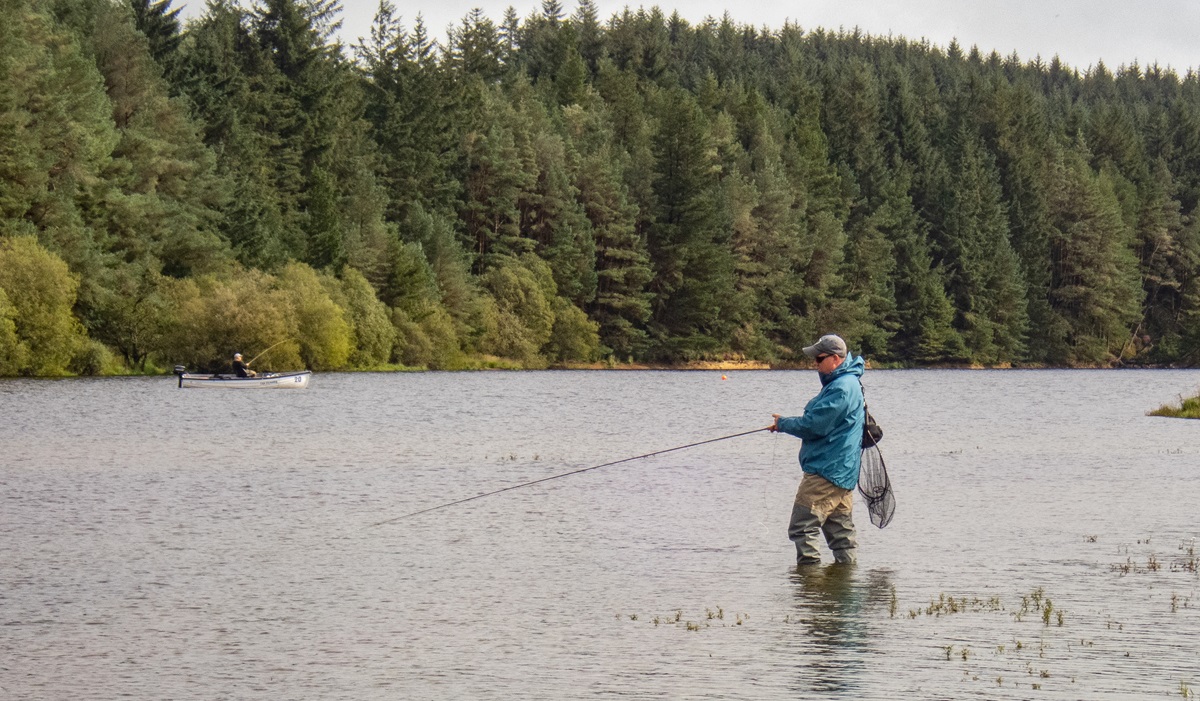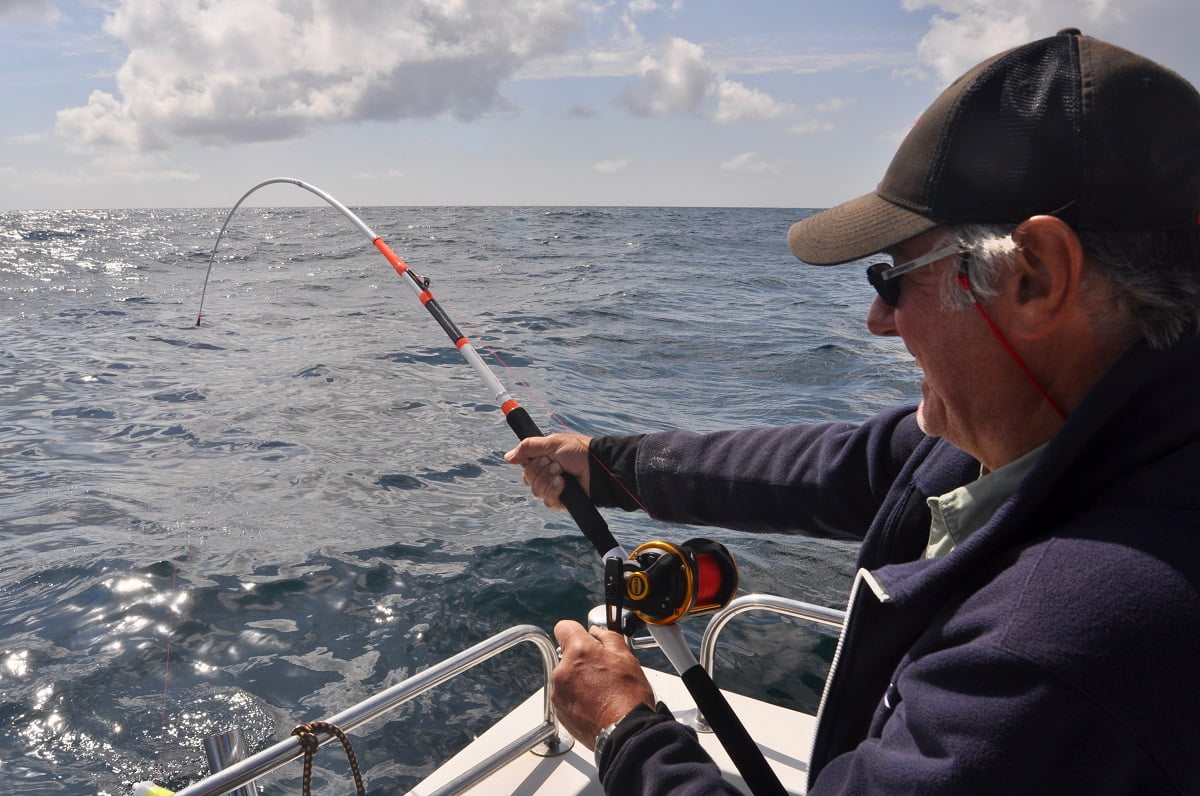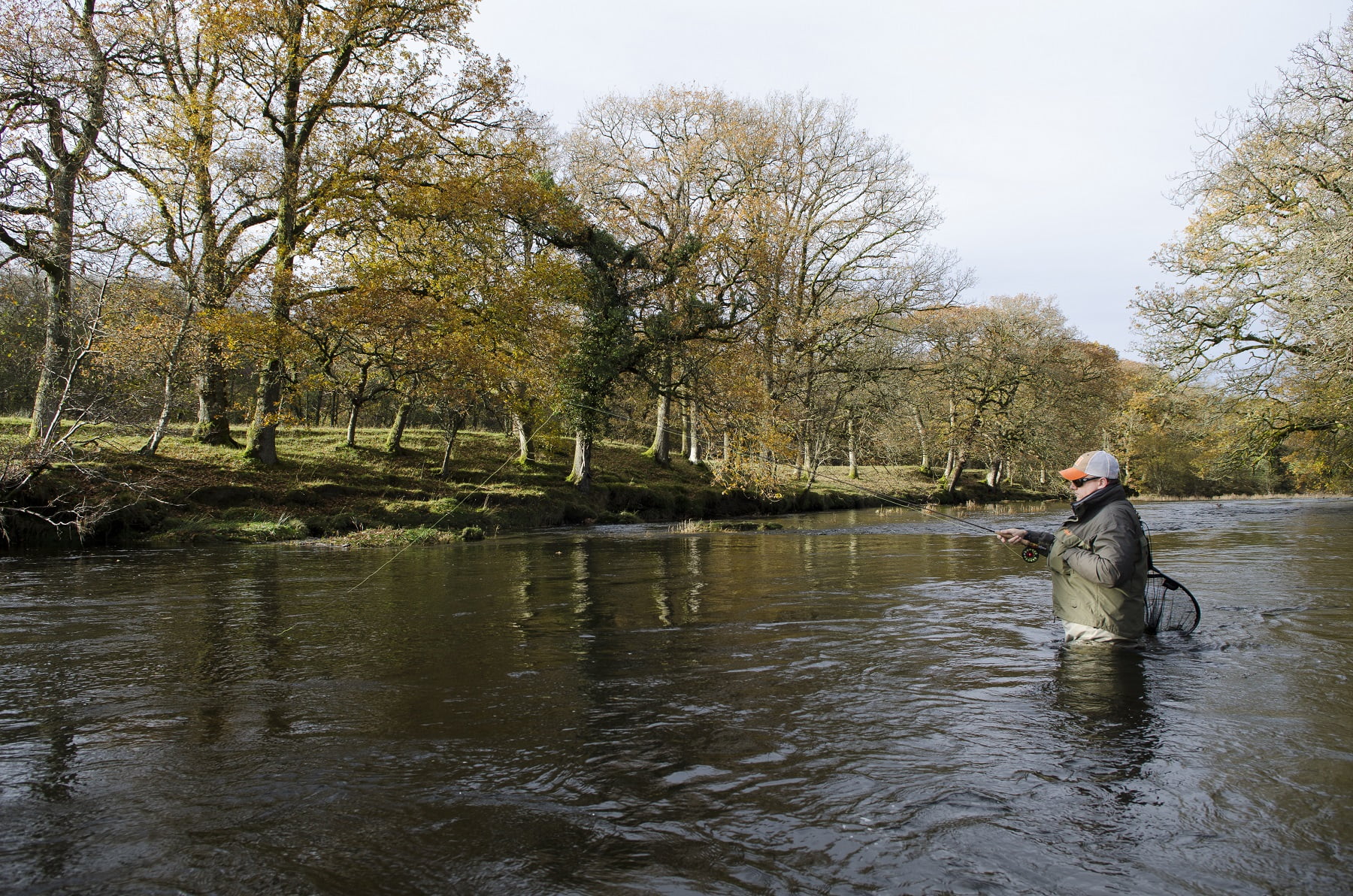Non-Native Invasive Species (INNS) Week 2025: What Welsh Anglers Need to Know
As we mark Non-Native Invasive Species Week, it’s an important time for us as anglers to reflect on how we can assist in protecting the waters we cherish, so we can help safeguard Welsh waters for our native wildlife, future generations, and of course – for better fishing.
Why INNS Matter to Anglers
Invasive Non-Native Species (INNS) are animals or plants introduced – intentionally or accidentally – outside of their natural range. In the UK, these species can disrupt native biodiversity, damage fisheries, and hinder our enjoyment of rivers and lakes.
Species like signal crayfish, killer shrimp, and floating pennywort can rapidly spread and drastically alter aquatic ecosystems. For anglers, this means fewer native fish, blocked access to water, and damaged habitats.
INNS to Watch Out for in Wales
Keep an eye out for these problematic invaders in Welsh rivers and lakes:
- Signal Crayfish (Pacifastacus leniusculus): Much larger than native crayfish, with a red underside claw and aggressive behaviour, they can erode riverbanks and outcompete native species. They also carry a disease that can wipe out our native white clawed crayfish populations. (Image 1)
- Killer Shrimp (Dikerogammarus villosus): A small but ferocious predator, they devour fish eggs and other invertebrates, leading to reduced diversity of other aquatic insect communities. (Image 2)
- Topmouth Gudgeon (Pseudorasbora parva): A small fish native to Asia that breeds rapidly and competes with native species for food. They are extremely invasive, causing great harm to local ecosystems. Topmouth gudgeon readily eat the eggs and larvae of native species. (Image 3)
- Floating Pennywort (Hydrocotyle ranunculoides): Forms dense surface mats on stillwaters, canals and slow-flowing rivers, starving native plants and fish of light and oxygen. (Image 4)
- New Zealand Pygmyweed (Crassula helmsii): Chokes up ponds, lakes and ditches; very difficult to remove once established. It can travel very quickly and easily by tiny fragments. (Image 5)
- Himalayan Balsam (Impatiens glandulifera): Common on Welsh riverbanks, it outcompetes native plants and dies back in winter, leaving banks bare and prone to erosion. (Image 6)
- Japanese Knotweed (Fallopia japonica): A notorious plant that spreads rapidly through root systems and damages infrastructure. It can dominate riverbanks and reduce biodiversity as well as contributing to bank erosion. (Image 7)
- Giant Hogweed (Heracleum mantegazzianum): An imposing plant with umbrella-like flowers. Its sap can cause severe skin burns when exposed to sunlight—posing a direct danger to anglers and walkers alike. (Image 8)
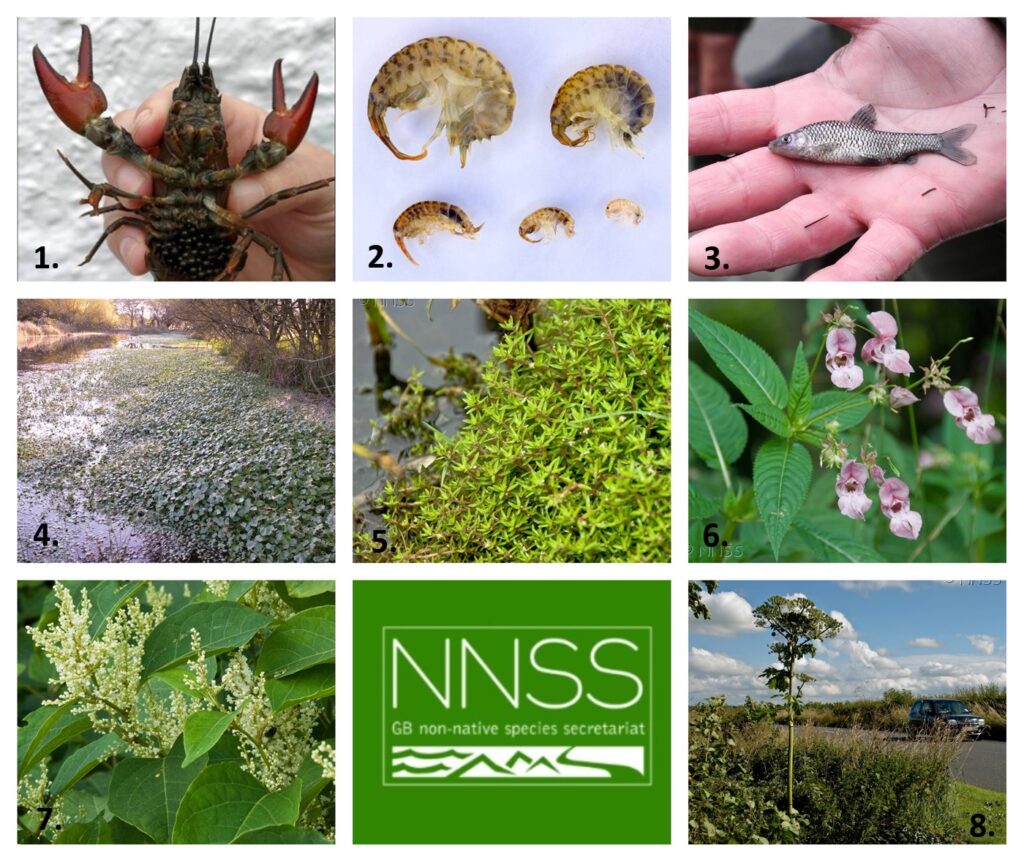
‘Check, Clean, Dry’: Your Role in Stopping the Spread
You are the front line. Anglers move between waters frequently, and so does the equipment we use. This is how many invasive species hitch a ride. Here’s what you can do:
- Check: Before leaving the water, inspect clothing, boots, waders, nets, rods, and any equipment for mud, plants or animals.
- Clean: Use clean water to rinse off all kit thoroughly – ideally hot water where possible.
- Dry: Let everything dry fully for at least 48 hours before using it in another waterbody. Many invasive species can survive in damp conditions for days.
Even a fragment of a plant or a single shrimp can start a new infestation.
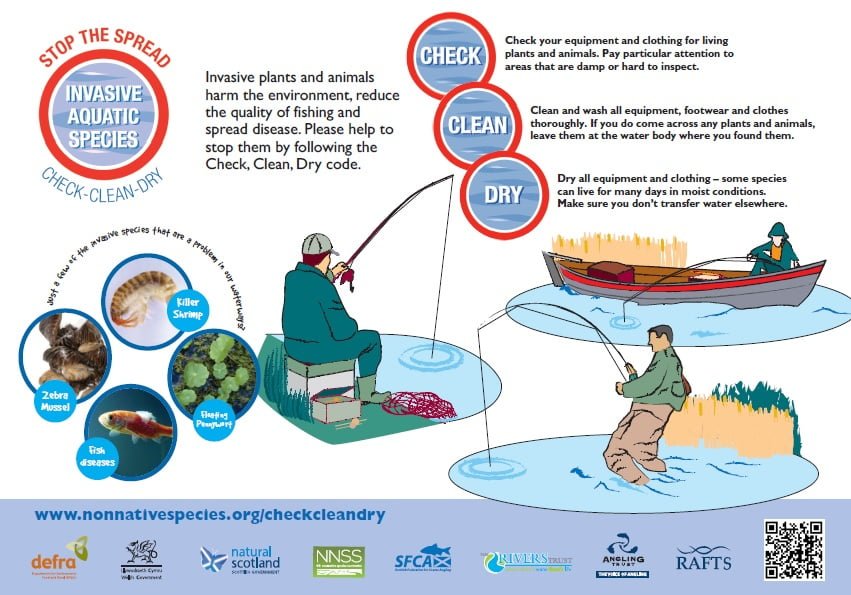
What to Do if You Encounter an Invasive Species
Sightings of INNS should be reported in accordance with GB Non-native Species Secretariat guidance. If you think you’ve spotted an invasive plant or animal:
- Take a clear photo and note the location (GPS. What3words or a nearby landmark).
- Don’t attempt to remove or disturb it—this could cause further spread or ecological harm.
- Report it to:
- www.brc.ac.uk/irecord (upload your sighting)
- Or email: NNSI@apha.gov.uk
Swift reporting helps local authorities and environmental bodies manage new outbreaks early.
Anglers as Guardians of Welsh Waters
As anglers, we’re out on the water more than most. Your eyes and actions make a difference. This INNS Week 2025, take pride in doing your part:
- Check, Clean, Dry every time.
- Know what to look for.
- Report anything unusual.
Get Involved
Anglers are some of the best stewards of our rivers and lakes. By staying alert, following simple biosecurity steps, and reporting anything unusual, you’re helping protect the places we all love to fish.
Together, we can help stop the spread of invasive species and keep Wales’ waters healthy for fish, wildlife, and future generations of anglers.
Get Involved! – Afonydd Cymru – From Citizen Science groups to reporting pollution, there are numerous ways you can help restore and protect your local river.
Natural Resources Wales / Four Rivers for LIFE – For partnership volunteering opportunities including Balsam Eradication Project.
Invasive species image credit: GBINNS site gallery
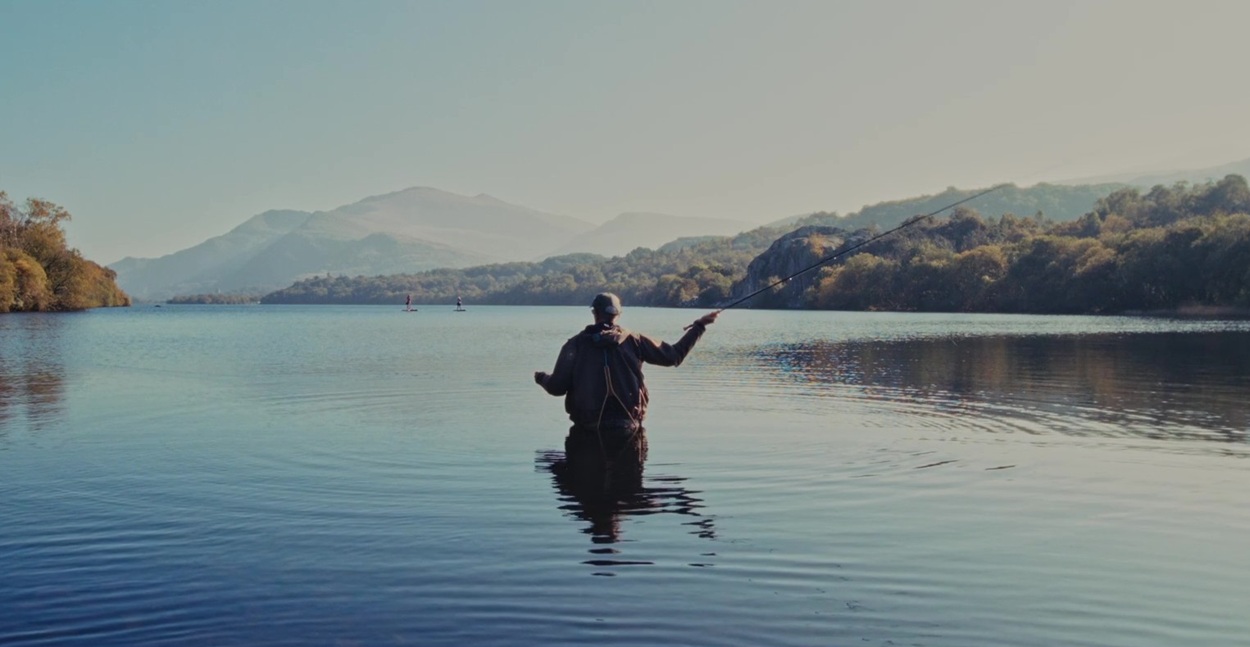
Am ein bywydau 'About our lives' - Cymdeithas Pysgota Seiont Gwyrfai & Llyfni VIDEO
A Welsh language film (Cymraeg) with English subtitles. We’re pleased to present: Am ein bywydau – a film…
Read More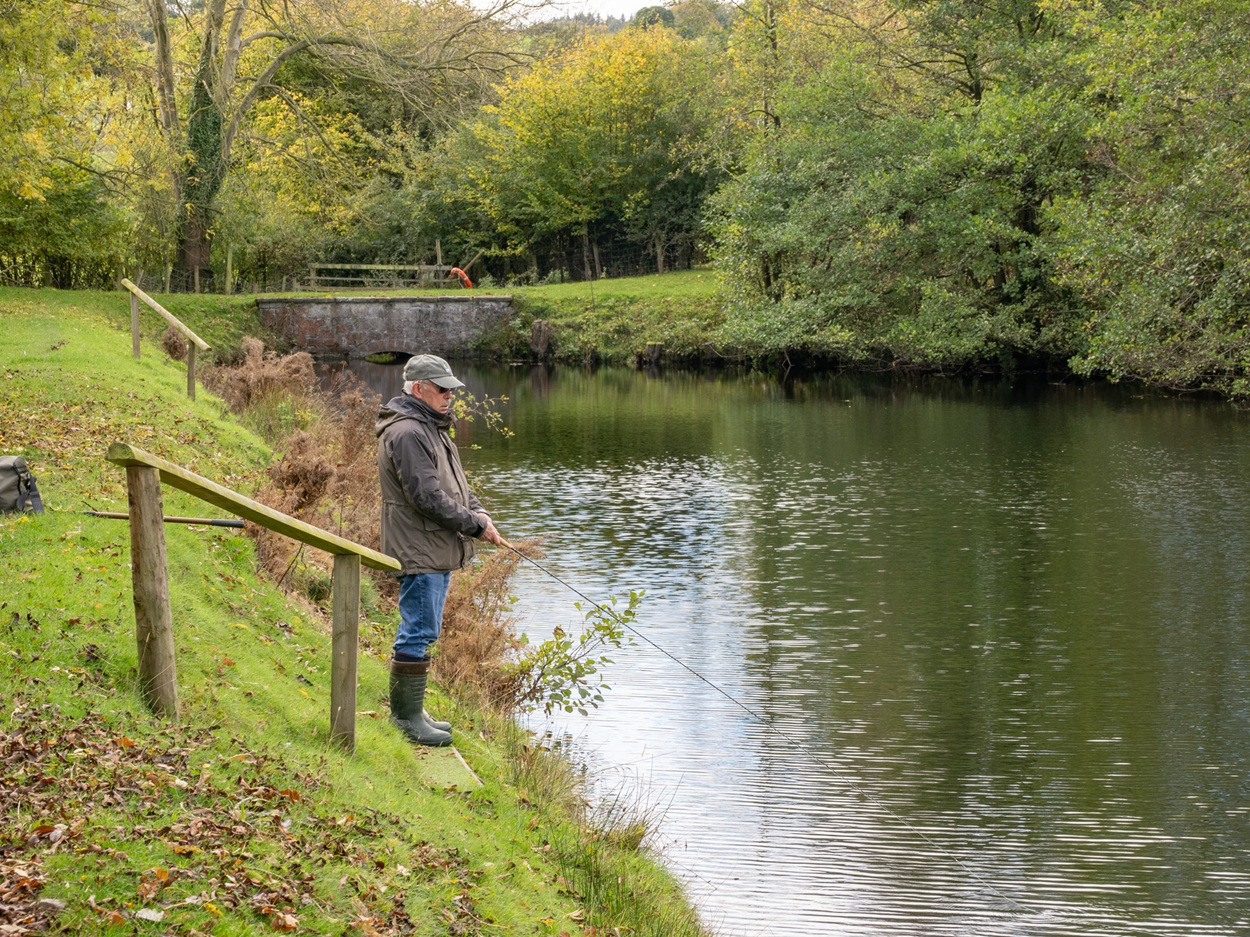
Fishing Clubs of Wales: Rhyl & St Asaph Angling Association VIDEO
We join Chris Porteous of Rhyl & St Asaph Angling Association on their club lake, where Chris shares information about…
Read More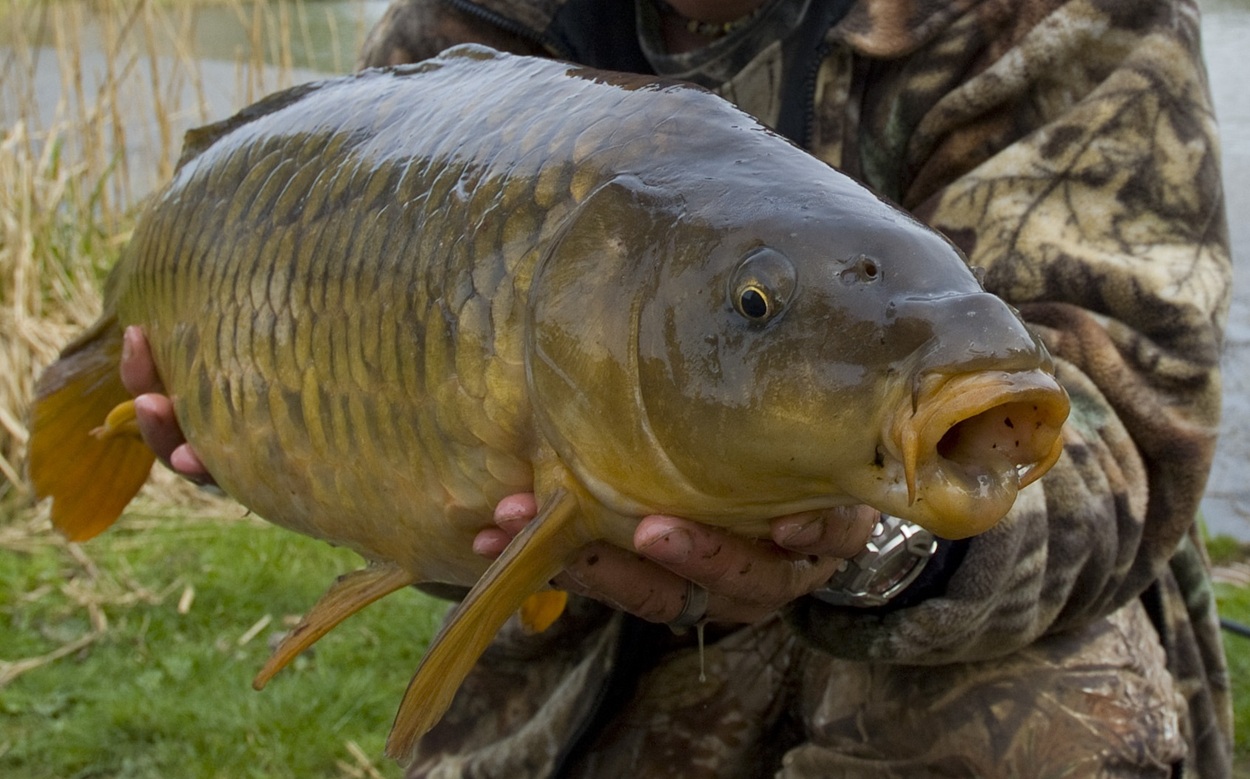
Winter Stillwater Carp Fishing
Wales may not be world renowned for its carp fishing, but a plethora of superb options do exist, with hundreds…
Read More

